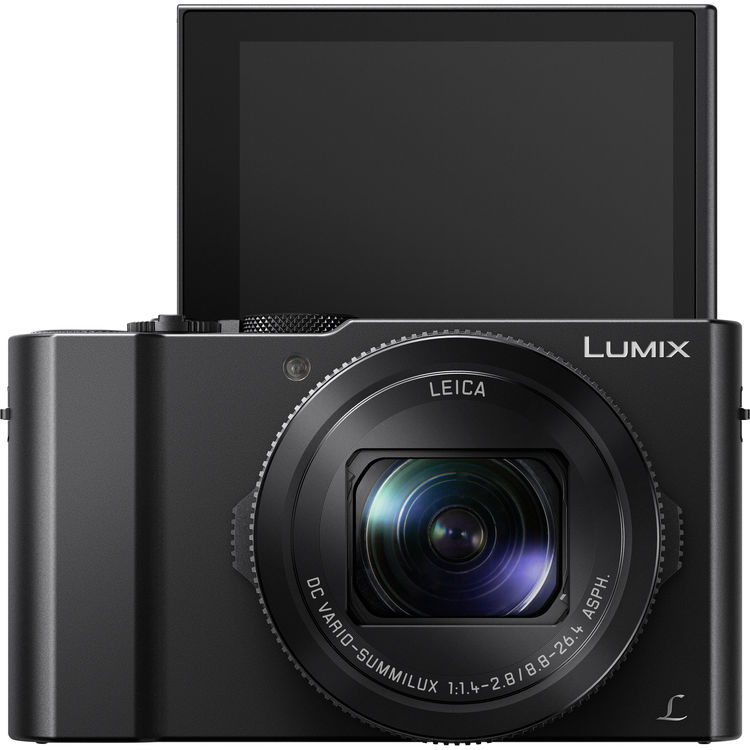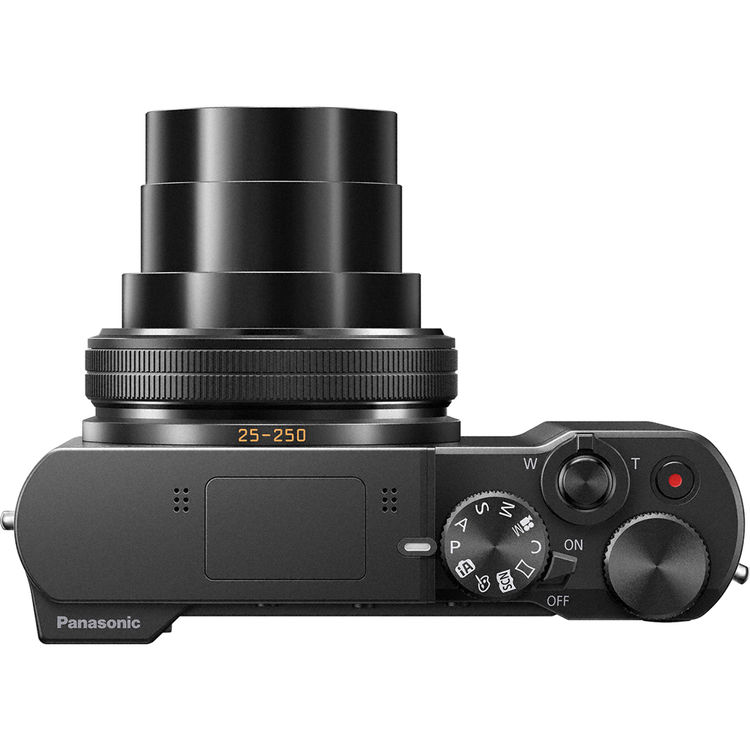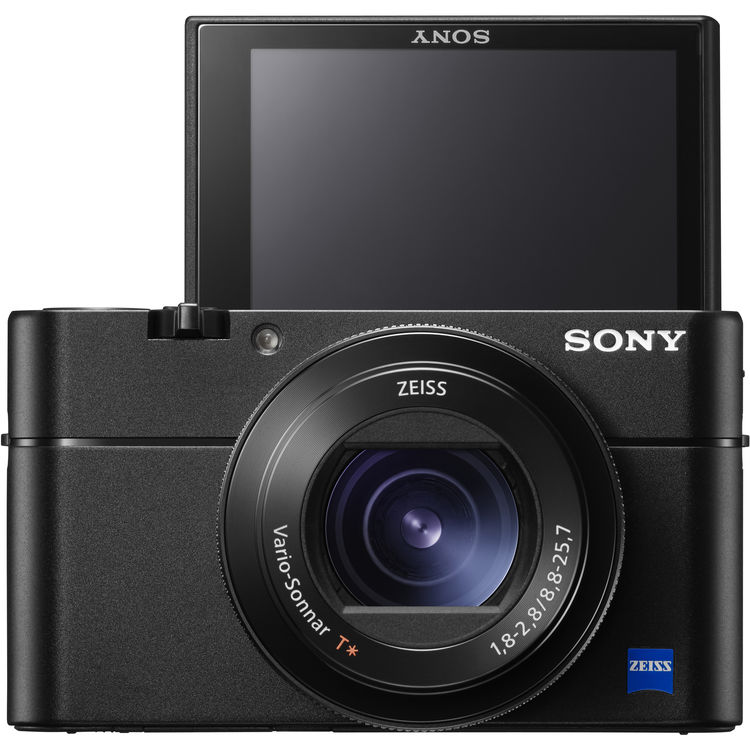This guide is going to be specific to vloggers who want to get a small, light weight, vlogging camera that can be easily slipped in a pocket or dropped in a purse or bag.
If you constantly move to different locations throughout your day it doesn’t really make sense to be lugging around a heavy camera and lens. Vlogging is sometimes a game of volume – the more you carry around a camera with you, the more opportunities for vlogging. The more you shoot, the more footage you have to work with during the edit!
If you’re planning on being a home studio vlogger or reviewer, or on generally having your camera on a tripod most of the time, then watch out for our upcoming guide for the best vlogging cameras of 2017. (Coming soon!) This guide will focus on small size, pocketability and portability. It’s for the vlogger looking for an everyday carry (EDC) camera that doesn’t require a dedicated camera bag.
All cameras on this list are relatively pocketable and all have large 1-inch sized image sensors. This means they are capable of significantly better image quality than even the latest generation smart phone or the typical point and shoot camera that you find at your local Best Buy. In real world use, this means you can capture more detail, especially in low light. If you also shoot still images, you will also be able to crop your photos significantly before the image degrades. A 1-inch sensor is also larger than that found in your typical action camera like a GoPro.
1. Our pick for the best compact vlogging camera of 2017: Sony RX-100 V (aka Sony RX100 M5) –
What we like:
One of the best autofocusing cameras for video out right now.
Great slow-motion options.
Extremely high image quality in 1080p and 4K.
What we don’t like:
Pricey. It’s the most expensive camera on this list.
No touchscreen controls.
Overheating in 4K and 120fps modes.
Sony have announced a new RX100 every year since 2012. All models are currently still in the market at varying price points. This is the most recent one, and the most expensive camera on this list, by far. But with good reason. Although its 24-70mm equivalent f/1.8 – f/2.8 lens has the least zoom range in this list, this is the most feature-packed camera on this list, having features that the others can only dream of. The zoom coverage also covers the most useful focal lengths, in fact most pro zoom lenses for DSLR cameras cover the 24-70mm range.
The biggest advantage of the RX 100 V for vlogging is its astounding autofocus performance. None of the other cameras on this list even come close. It’s decisive, and it rarely hunts. Nothing sucks more than having footage that is out of focus, or having to wait for a camera to focus on the subject and not the background.
The Sony RX100 V is also able to shoot stunning high quality 4K. But that’s not actually what I find exciting, since most people won’t be vlogging in 4K. And shooting in 4K has a huge downside – the camera will overheat.
What I find most exciting about this camera is its slow motion abilities. Its got the ability to shoot in full HD at 120fps in regular video mode (not in a special mode). If you don’t know what that means, just know that it allows you to be able to get amazing slow-motion footage out of this tiny camera. Want to get even more slow-mo? It also has special modes that allow you to shoot 240fps (in almost full HD quality), 480fps and even 1000fps (although it is no longer anywhere near HD quality). That is just insane! Normally, if you wanted to shoot slow-motion at these framerates, you’d need to spend upwards of $10, 000. But you can now do all that in a camera that fits in your pocket!
The biggest downside to the RX100 V is that it tends to overheat when shooting in 4K. Because of this you are limited to shooting 4K in 5 minute increments, and during a hot day you will be unable to continuously record in 4K if the camera isn’t given enough time to cool down.
Another bummer – while the LCD does flip up, it is not a touchscreen, so it takes away from ease of use just a bit. The lens is also image stabilized, however, I’ve found that the Sony image stabilization (they call it Steady Shot) is not quite as effective as the one on the Canon G7X II.
2. The runner up: Canon G7X Mark II – The best value!
What we like:
Very effective image stabilization.
Great out of camera colors.
Great value for the price.
What we don’t like:
Autofocus is not as great as the Sony.
No 4K capture.
This is a classic among many Youtubers, even Casey Neistat occasionally carried the Mark I version. (Although Casey’s main shooter is a big and heavy Canon 80D, he uses the G7X when the size matters e.g. when shooting inside planes where he says he is sometimes told to turn off his big camera).
The G7X has a useful 24-100mm equivalent f/1.8 – f/2.8 lens. This means you’re already covered from the wide angle (24mm) to telephoto (100mm). Because it’s an f/1.8 to f/2.8 lens, it’s also able to let in quite a lot of light which is extremely useful in low light situations. It’s also got a flip-up touchscreen LCD, perfect for checking your framing when vlogging. But to me, the best feature is its very effective image stabilization which really helps in reducing shake and making handheld videos very watchable. Out of all cameras on this list, I’ve found this to have the most effective image stabilization. Another extremely useful feature is a very user-friendly time lapse movie mode which allows for effortless timelapse capture.
The biggest downside of the G7X Mark II is that autofocus occasionally struggles especially when filming moving subjects. It doesn’t track subjects as well as the Sony. It also sometimes fails in keeping focus on the face when you’ve got the camera facing you. Although to be fair continuous autofocus during video is something that most cameras struggle with, and the Canon isn’t any worse than its peers, it’s just that the Sony is just so much better at autofocus.
Unfortunately, it doesn’t shoot 4K, and it is not able to shoot slow-motion like the Sony RX100 above (the Canon is limited to 60 fps at 1080p and it has no special slow motion modes). One other plus for the Canon is that it is capable of some amazing straight-out-of-camera (SOOC) colors. This is really one of the things that Canon is known for. The colors aren’t necessarily more accurate, but they have a very pleasing look that is especially great for skin tones. Even when shooting in low light, I’ve found the G7X II to have the most pleasing color, especially skin tones.
3. Panasonic LX10 aka Panasonic LX15 in some countries –

With an f/1.4 Leica lens, the ability to shoot 4K at longer intervals, and intuitive touch screen controls, the LX10 is a great alternative.
What we like:
Able to shoot 4K longer than the Sony RX100
Well implemented touchscreen controls
Cheaper than the Sony RX100 V
What we don’t like:
Crop in video mode with use of image stabilization – makes it less useful for vlogging
No built in neutral density filter
Autofocus not as good as the Sony RX100
This is Panasonic’s answer to the Sony RX100 series. Aside from coming in at a street price of a few hundred dollars less than the Sony RX100 V, the LX15 offers a similar 24-72mm equivalent lens. The difference is that the Panasonic has an f/1.4 – f/2.8 lens. This means that the lens is half a stop brighter at the widest angle of 24mm (i.e. when not zoomed in). This will come in useful if you shoot a lot in low light situations, but otherwise, the half a stop difference isn’t much in situations with good light.
The Panasonic also has a flip-up LCD, but where it shines is in its very well implemented touchscreen controls. Panasonic was one of the first to introduce touchscreen controls to their cameras, and their experience really shows. The touchscreen controls are very intuitive, and very responsive.
The LX10 is also able to shoot 4K video in 15 minute increments, and is typically able to continue shooting subsequent clips without overheating, unlike the Sony.
A potential deal breaker for the LX10 is that it applies a crop when shooting video. This means that when shooting 4K, the lens become a 36-108mm equivalent and when shooting in 1080p with image stabilization turned on the lens becomes a 30-90mm equivalent. This is useful if you need the reach, but if you want to film yourself at arms length when vlogging, it’s not going to be as wide as any of the cameras on this list.
The LX10 is also able to shoot some slow-motion at 120fps, but unlike the Sony, this is a special mode and not a regular video mode. Unfortunately, autofocus is also not to the level of the Sony RX100 V and is even occasionally worse than the Canon G7XII in video (for stills photography, I found the Panasonic much faster focusing than the Canon). Another negative is that the LX10 does not have a built-in neutral density filter, so you won’t always be able to take advantage of the bright lens in good light.
4. The big zoom option: Panasonic ZS100 aka TZ100 in some countries –

With a 10x zoom lens in a tiny form factor, the ZS100 is the best option for those who need the long reach without sacrificing pocketability.
What we like:
Huge zoom range for the size
What we don’t like:
No flip up LCD
Not as great in low light as the others on this list
This is the largest camera (physically) in this list, but it is still relatively compact. But there is a good reason for that – this camera has the biggest zoom range out of all cameras on this list. It has a whopping 10x zoom – a 25mm-250mm equivalent f/2.8 – f/5.9 lens.
That’s more than double the telephoto reach of any other camera on this list! The downside of that though is that the lens is considerably less bright which means it is less useful in low light. At its widest setting, the lens starts at f/2.8 and by the time you zoom out to its longest reach, it’s down to f/5.9 which will not be very useful in anything but extremely good light. But if you really want a large zoom range, this is the one to get.
One big downside of the ZS100 is that like the LX10, it also applies a crop when shooting 4K. The lens becomes a 37-370mm equivalent when in filming in 4K, so you lose quite a bit on the wide end, meaning it’s less useful for filming yourself handheld unless you use a really long selfie stick. But of course, this is a plus if you want that long reach.
When shooting in 1080p, there is still a slight crop, but not as much as in 4K, this means that when you’re vlogging and holding the camera at arms length, you want to make sure you’re in 1080p mode and not 4K.
While the ZS100 also has the great touchscreen implementation of Panasonic, unfortunately, it does not flip up at all. Like all other cameras on this list, the lens is also image stabilized, but it is more of a requirement on the ZS100 because of its large zoom range.
Overall, this is the one to get if you want lots of zoom reach in a pocketable camera, however, you will be giving up low light performance because of the smaller aperture of the lens. I would only recommend this if you see yourself really, really, really needing that zoom range. For most regular vloggers, I believe the brighter aperture of all the other cameras on this list would be more useful in most circumstances and the lesser zoom of the other cameras are more than enough for regular vlogging.
—–
CompactShooter.com is a participant in the Amazon Services LLC Associates Program, an affiliate advertising program designed to provide a means for sites to earn advertising fees by advertising and linking to Amazon.com. This means that we get a small commission on products sold through affiliate links at no extra cost to you.



[…] Click here for our list of the best pocketable vlogging cameras of 2017. […]